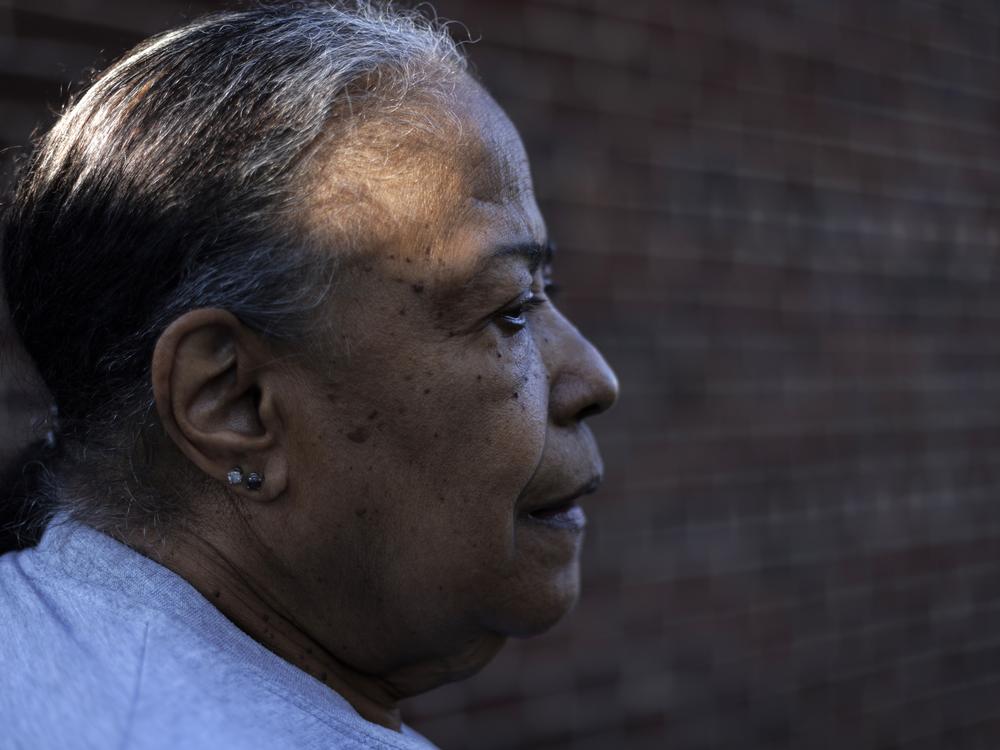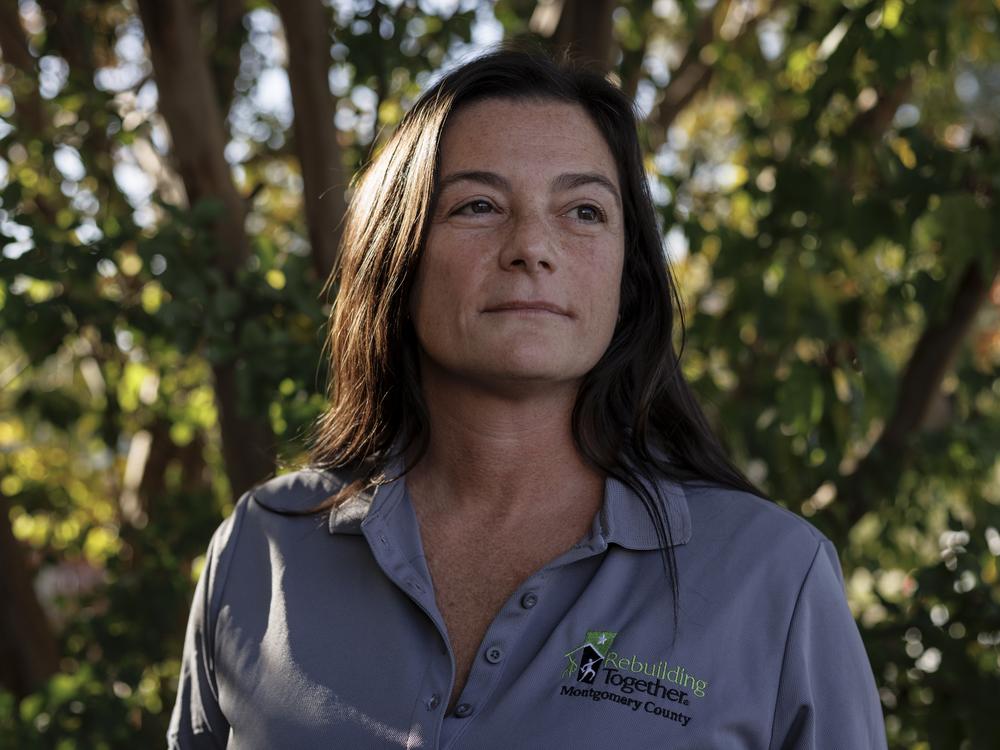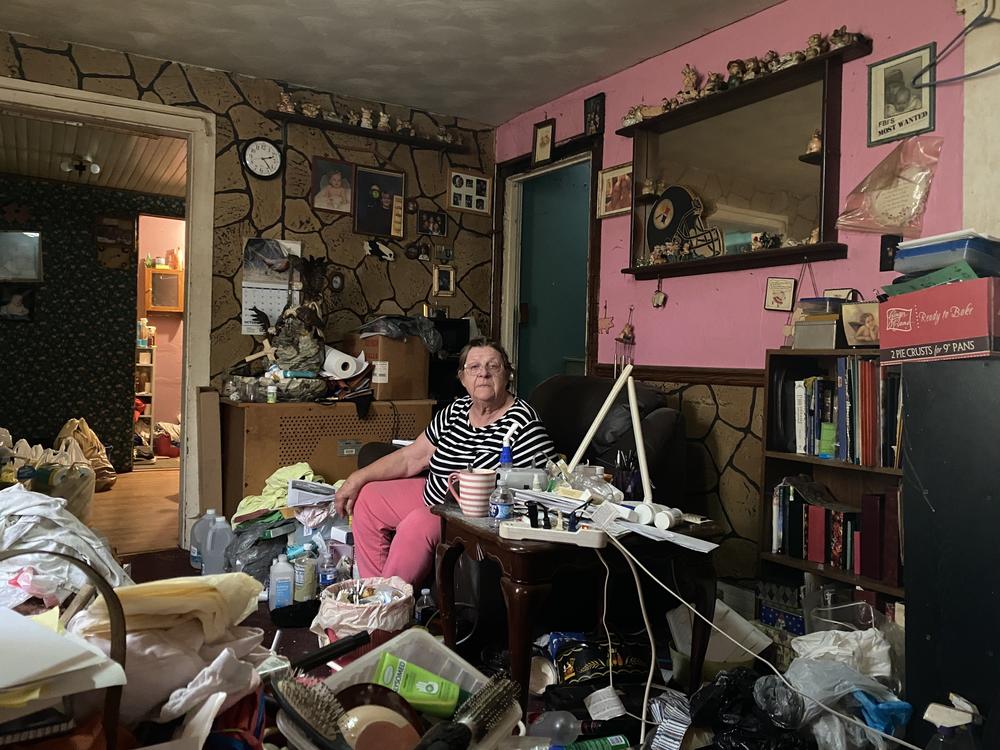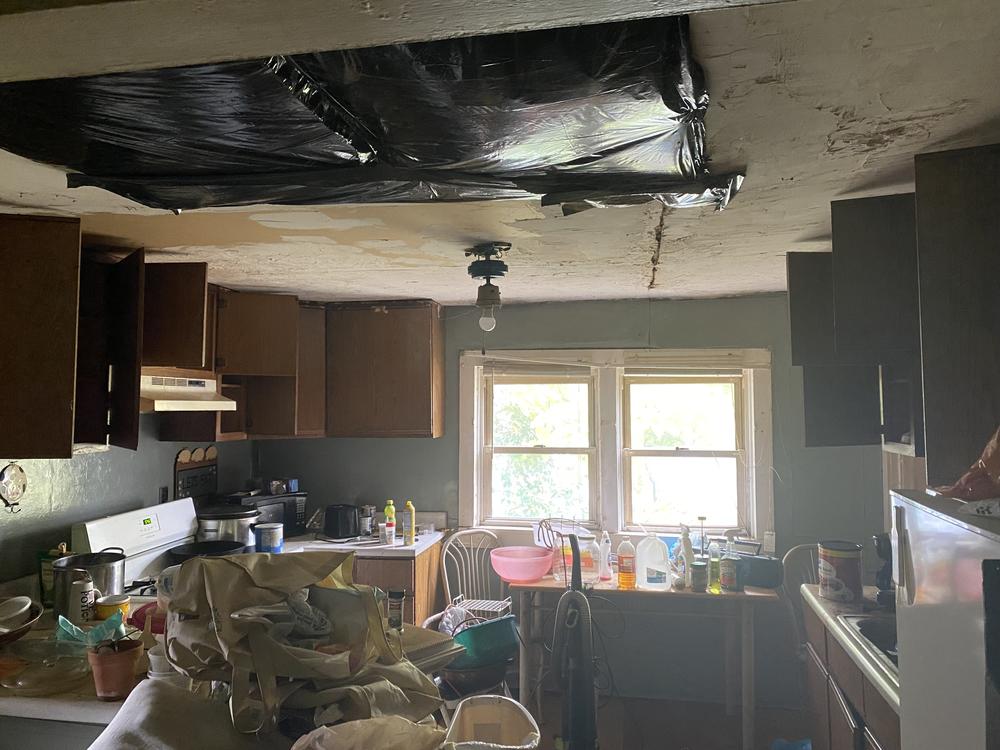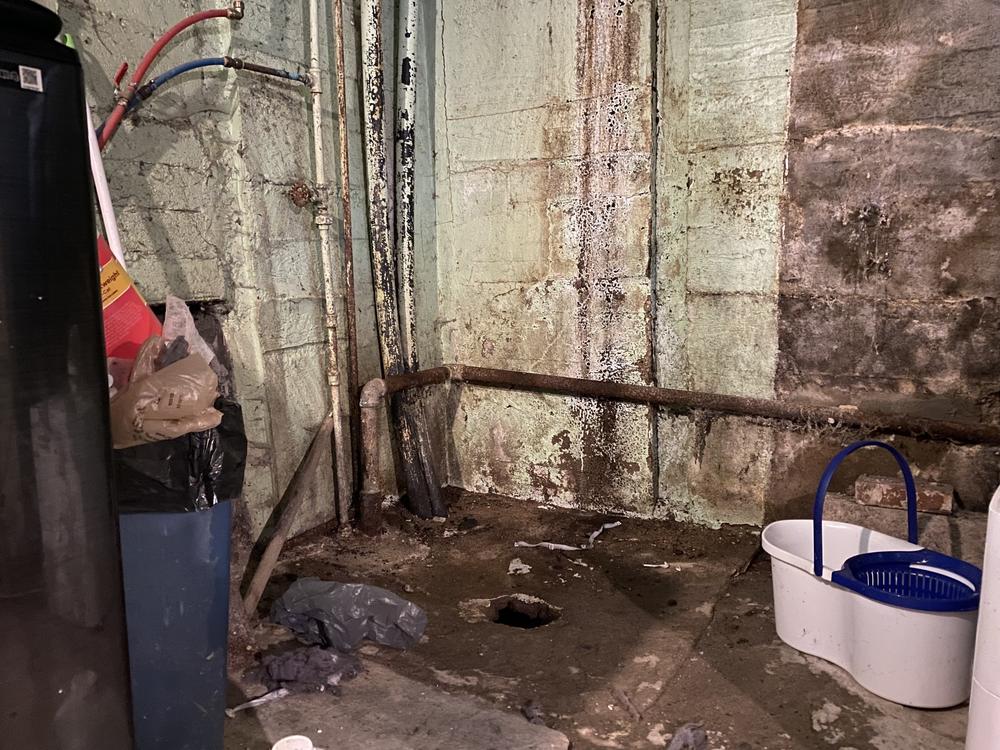Section Branding
Header Content
Millions of low-cost homes are deteriorating, making the U.S. housing shortage worse
Primary Content
Pat Haskins’ red-brick home in Silver Spring, Md, is about as old as she is: 72. There are family photos everywhere and walls painted her favorite color: “Purple, purple purple,” she laughs, just like her toenails and slide-on sandals.
But aging together — she and her house — has been hard.
A few years ago, her basement started flooding when it rained. “I would come down the stairs and before I could get to the bottom step, it would come right up past my ankle,” she says. A bathroom floor sagged and the back porch was falling apart. At the same time, it was harder to get around as diabetes ravaged her partner, James Harris. He has kidney failure and has lost his eyesight and one leg.
Sitting outside on their steps, Haskins demonstrates how for years they struggled together to get him into the house. “So he would sit down and just go one by one,” she says, hauling himself up one step at a time, while she grabbed under his arms to pull him up.
“That's why I have arthritis in my back, you know, because of helping him,” she says.
They desperately needed a wheelchair ramp, among other fixes. But like so many in older, cheaper housing, Haskins couldn't afford it. She was an elementary school science teacher with a small pension, but says she used that $30,000 to put her daughter through college.
“I don't regret it,” she says, “but if I had kept the money, I wouldn't need the help that I need.”
Millions of people across the U.S. live in places that are falling into disrepair, even becoming uninhabitable, making a massive shortage of affordable housing worse. They are disproportionately lower-income and Black or Hispanic, and many are seniors on fixed incomes. But a patchwork of repair programs — federal, state, local and nonprofit — are largely underfunded, with years-long waitlists. It’s a crisis that threatens people’s health and lives, yet can be invisible from the outside.
“We don't see the black mold inside the house that gives a kid asthma. Or the fact that inadequate air conditioning means that an elderly couple is suffering from heatstroke,” says Todd Swanstrom, a public policy professor at the University of Missouri-St. Louis.
Haskins doesn’t know where she and Harris would go if they had to leave, and their only plan is to stay put forever. So she’s grateful they did get repairs from a national nonprofit called Rebuilding Together, which saw referrals for help in Haskins’ area spike 400% last year.
“We are seeing it increase in terms of the need, but also the issues are becoming more significant,” says Chloe Bernardi, who heads the group’s local chapter in Maryland's Montgomery County. “We go in maybe for one issue and we can identify four or five other issues that, if we're not fixing then and there, will become more magnified.”
She says one older couple, living with a son and grandchildren, spent a year catching rain in buckets because of a hole in the roof. Another woman, 100-years-old and living with a relative, had been burning through $700 a month of oil to heat her house last winter before Bernardi’s group replaced her broken HVAC system.
A Pennsylvania home repair program is touted as a model
Pennsylvania has some of the country’s oldest housing. Velma Fishel’s home was built in 1890 as the tiny borough of Glen Campbell, east of Pittsburgh, was being settled as a coal mining town.
“I’ve been here since ‘93,” she says, sitting in her chair in a living room with walls painted bright pink. After she retired as a nursing home aide a few years ago, she realized the cellar door no longer shut right. Then, she says, “when I went down to change the filter of my furnace, I noticed the steps shifted.”
Finally, one day Fishel leaned back in her chair to stretch her back and was shocked to see the ceiling and walls were separating. It turned out the foundation had shifted and the entire back of her house was sagging.
“How could I fix it? I’m on Social Security!” she recalls thinking. “I mean, I was sick. Chest pains. All I wanted to do was sleep because I got into that funk, you know.”
Now, her foundation has been replaced. She no longer has to tip-toe on her collapsing front porch because she has a new one. And soon, workers will fix a gaping hole in her kitchen ceiling.
“I can get on with my life in peace and be content and not have to worry about it,” she says. “I like this stress free thing.”
Fishel’s new foundation is thanks to Pennsylvania’s Whole-Home Repairs program, enacted two years ago. It’s more flexible than many other programs, which come with lots of restrictions on how the money can be spent.
“You might get $5,000 or $6,000 to weatherize your home, but meanwhile, the roof is leaking,” says Swanstrom, the housing researcher. “What good does it do to weatherize the home if the roof is leaking, right?”
Whole-Home Repairs makes it easier to spend money on the most urgent problems and then coordinate with other repair programs that could kick in more money. It’s working, says LuAnn Zak, who helps direct planning and development in Pennsylvania's Indiana County, where Fishel lives. She thinks of another woman who’d been asking the county for help for decades.
“She applied back in the 1990s, and we would always run out of funding before we would get to her. We finally, with this program, are able to come in,” she says.
Without such intervention, Zak says entire communities can be damaged by disrepair. “I see more and more vacant houses yearly, just being abandoned,” she says.
The state program was funded with pandemic aid, and counties coordinate the repairs. They decide who qualifies based on income, and can offer up to a $50,000 grant to a household, or loan to a small landlord. There’s also money to make homes more energy-efficient and for workforce training to combat a construction industry shortage.
“Word of mouth traveled incredibly fast” when it launched, says Pennsylvania state Sen. Nikil Saval, the program’s sponsor. One county reached its funding limit in hours, he says, and demand was so high around Pittsburgh that only 6% of those who applied will get repairs.
Several states have taken up this model, and a proposal in Congress would scale it nationally. But despite its bipartisan popularity, Pennsylvania state lawmakers did not renew funding this year, leaving 18,000 homeowners on the waitlist. Saval says he’ll try again.
For now, counties are spending down what they have.
Coping with a leaky roof and the wafting smell of sewage
Just a short drive up the road from Velma Fishel is a cozy but crumbling three-bedroom home that Melissa and Robert Cox think dates to the 1920s or '30s. It was all Melissa could afford when she left a bad marriage with her three children. She bought it rent-to-own a dozen years ago for $7,000 total, but it’s come with a slew of costly problems.
“Sorry about the smell,” Robert Cox warns as he leads the way to the basement. He points to an open shower drain in a corner and says sewage seeps in when it rains because the old terracotta piping broke. Flushing an upstairs toilet can also send that smell wafting through the house.
“I would be putting air fresheners in the vents, sticking them everywhere, on top of the dehumidifier,” Melissa Cox says.
The home’s original foundation — made of rocks and cement — is also crumbling away; the house has no gutters so water gushes down. Up on the second floor, Cox says when she first moved in rainwater would stream into one bedroom closet, and another bedroom had no finished walls.
She’s a family therapist, with a recent raise to $25 an hour. He's on disability for an autoimmune disease. They’ve struggled to put in new floors, new siding, and a new roof.
“When I did the roof, my uncle cosigned on a loan for me to do it because I didn't even have any credit,” she says. But they went with someone cheaper and say the work was shoddy.
Now, they are grateful that repairs on their house will start soon — including making the tiny first-floor bathroom more accessible for Robert and their oldest son, who has Down syndrome and can struggle with walking.
When they found out, “I just brought all my kids down and we prayed about it,” Robert Cox says. “I thank God for it because it is a blessing.”



